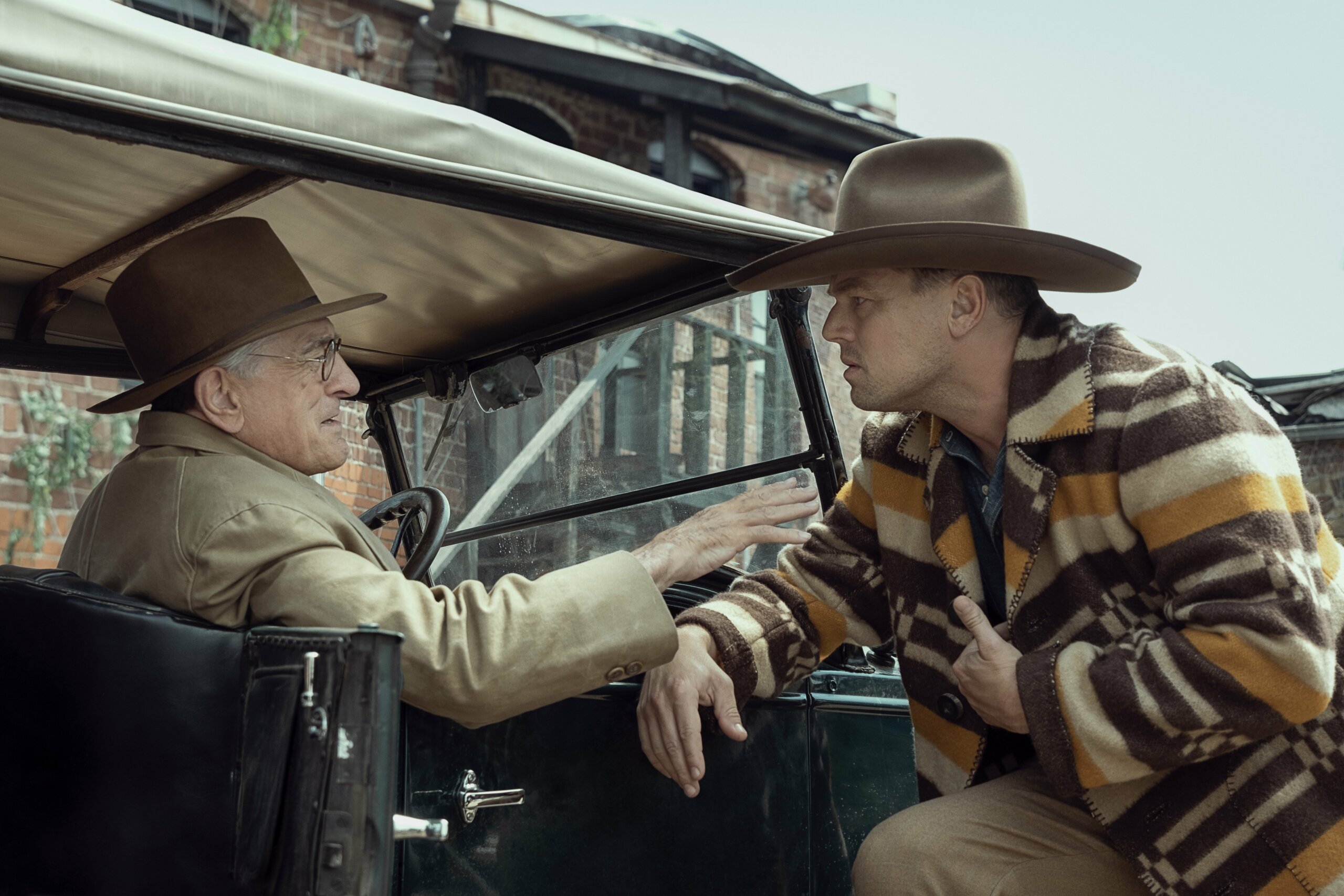
Movie review: ‘Killers of the Flower Moon’
Emotional ambiguity pervades the dramatization “Killers of the Flower Moon” (Paramount/Apple TV+). Epic yet intimate, director and co-writer Martin Scorsese’s masterful recounting of real-life events in 1920s Oklahoma is too gritty for kids, but deeply rewarding for grown-ups and possibly acceptable for older teens.
As relatively few viewers may know, shortly before the turn of the 20th century, oil was discovered on land owned by the indigenous Osage Nation. By the dawn of the Jazz Age, the windfall that followed had brought the Native Americans prosperity. But it had also excited violent envy and greed among some of the area’s whites.
Stepping into the midst of this volatile blend of good fortune and malice comes returning World War I veteran Ernest Burkhart (Leonardo DiCaprio). The uncertainty characteristic of the story takes hold when Ernest meets strong-willed, wise Mollie Kyle (Lily Gladstone).
Ernest’s cattle rancher uncle Bill Hale (Robert De Niro), a local bigwig, points out the economic advantage to be gained by marrying an Osage woman who, like Mollie, has a headright to a share of the petroleum profits. But the screenplay, which Scorsese penned with Eric Roth, also establishes that Ernest and Mollie do genuinely fall for each other before rapidly tying the knot.
There’s a lengthening shadow hovering over the Osage community as they do so, however. A series of initially uninvestigated deaths have taken place that hardly seem attributable to natural causes. The remainder of the film, adapted from David Grann’s 2017 bestseller, is devoted to exploring the effects of this ongoing rash of fatalities on Ernest, Mollie and Bill.
By the time Federal agent Tom White (Jesse Plemons) arrives to delve into the mystery, Scorsese has presented us with a panorama of the time and place that serves as the backdrop to an intense tale of love, corruption and racial hatred. Top-flight writing, acting and cinematography all combine to make his outsized, three-and-a-half hour movie memorable.
Interestingly, Mollie is shown to be a devout Catholic who nonetheless practices various rituals traditional among the Osage. We’re not given enough evidence, though, to judge whether this combination represents inspired do-it-yourself inculturation or some unacceptable form of syncretism.
Mollie’s genuine faith stands in stark contrast to the religious hypocrisy of one of the other central figures. And it may account for the aura of tranquility she manages to maintain throughout the unfolding tragedy by which she – along with many others – is eventually victimized.
Mollie’s enduring stillness at the center of a human storm is just one of the powerful impressions viewers will take away from this subtle and unsettling saga. The fate of Ernest’s Everyman character, as he makes decisive moral choices that typify, in microcosm, a consistent theme in American history, is another. Overall, Scorsese’s audience will be left with much to ponder.
The film contains brief but graphic episodes of gory violence, gruesome sights, a scene of marital sensuality, several uses of profanity, a few milder oaths and occasional rough and crude language. The OSV News classification is A-III — adults. The Motion Picture Association rating is R — restricted. Under 17 requires accompanying parent or adult guardian.
—John Mulderig, OSV News

